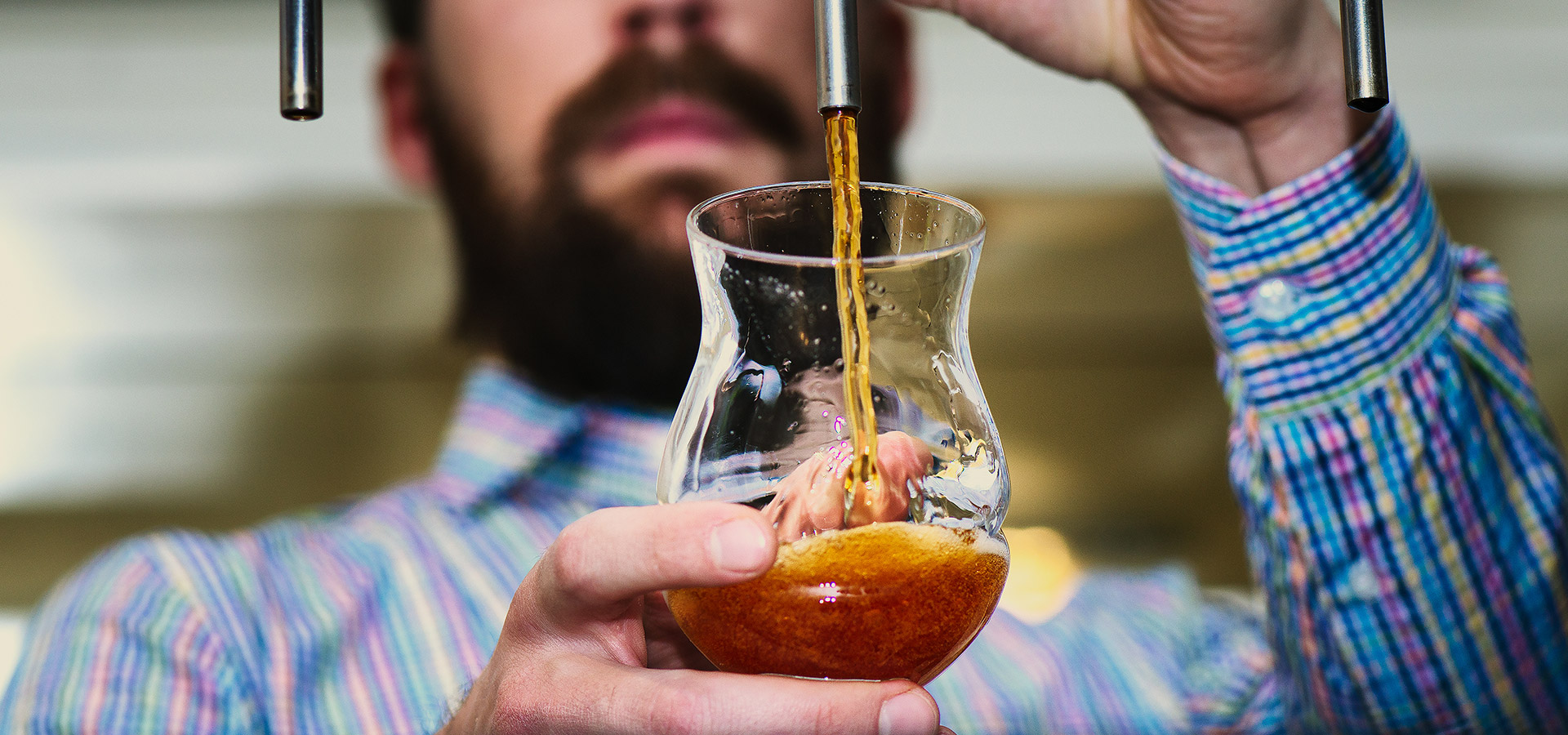Stephen Oliver, Managing Director of Marston’s Beer Company, scattered hops to the wind to celebrate year two of Marston’s Single Hop ale series at Doggett’s Coat & Badge on Blackfriars Bridge, and to suggest that we all should look more deeply at our hops.
As a follow-up to the resinous hop rubbing session, which had launched Marston’s 2012 Single Hop ale collection, Banks’s assistant head brewer, Simon Yates, had this year brewed six 4%abv demo beers. The intention was to highlight the individual flavours of the six hops chosen this year from Hop Merchants Charles Faram: East Kent Goldings (UK), Pacific Gem (NZ), Amarillo (US), Endeavour (UK); Wakatu (NZ) and El Dorado (US).
Simon Yates comments: “From a brewing perspective, I learnt so much in 2012 by brewing that year’s 12 single hop beers. The normal habit of blending two or more hops together may give beers greater complexity and depth, but to bring out the true characteristics that an individual variety can deliver, brewing with just one hop really makes them sing.”
Marston’s Sales director, James Coyle, adds: “Last year’s Single Hop range has influenced the way in which we look at beer. It has influenced us to be bolder and to broaden out the range we offer to pubs and to the off trade markets. And this summer, we will be launching a Pedigree New World Pale Ale, brewed especially for this summer’s Ashes Series with Australia’s Galaxy and Topaz hops! Ten years ago, tweaking the hop grist of such an iconic British brew as Pedigree would have been unthinkable; but the interest in hops and hops’ flavours is growing fast; and Pedigree New World Pale Ale will allow drinkers to experiment, with the reassurance of a leading brand”.
Previously hop growers and brewers have been in the habit of categorising hops by their alpha acid content into ‘aroma’ at c.3-6% alpha acid, ‘dual purpose’ at c.6-9%, and bittering hops at c.9% and above. But the enticing aromas of many new ‘bittering’ hops from all over the world could lead to a re-evaluation so as to re-categorise hops as much for their essential oils as for their alpha acids
Alpha acids are a major component of the resins found in hops, and when their chemical structure is chemically altered by heat in the boiling process (isomerisation) they provide the main bitter compounds associated in beer. But Simon Yates’s aim is challenge beer writers and fellow brewers to think beyond alpha acids towards the starry future provided by hops’ essential oils.
These oils are a complex mix of many compounds and can contribute in many ways to the flavour of beer. The oils present in each hop variety vary; but three classes exist within the hop oil fraction:
a) Sulphur compounds which represent c. 1% but are potent flavour compounds, with low taste thresholds.
b) Oxygenated compounds, which account for c. 25%
c) Hydrocarbons, which form c 75% of the compounds in fresh hops
The four major Hydrocarbon components are caryophyllene, farnesene, myrcene, & humulene. They account for 80% of the total essential oils; but they are very volatile and are only found in large quantities in beers that have been dry hopped (i.e. they are blown away by a raucous boil):
§ Caryophyllene (big in Goldings) provides lots of the character we lazily knew as ‘hoppy’; it adds a spicy herbal character similar to humulene when boiled
§ Humulene (Saaz has 45% and big in Goldings ) is thought to lend the distinctive ‘noble’ character to noble hops; its aroma is robust, woody, earthy, spicy, herbal
§ Myrcene (high for El Dorado) has an aggressively hoppy aroma and a harsh grassy character. US hops like Amarillo, Cascade, Citra and Simcoe are high in it; European hops less so. It contributes floral, citrus, piney notes.
§ Farnesene (big for Wakatu) often represents less than 1% of the hop oil, though it can peak at 20% in some noble varieties such as Saaz (CZ), Tettnanger & Spalter (Germany) or Lubelski (Poland). Hops with high farnesene are most effective when used late in the boil (they are volatile) or in dry hopping, and their effect on flavour is yet to be fully understood.
Simon Yates finishes: “So, we have a brave new world of brewing and beer writing ahead of us; and for those who didn’t know their farnesenes from their myrcenes – now you do.”
Amber Organ
R&R Teamwork
T: 020 7384 1333 | M: 07850 744 049 | Twitter: @Ambs_O
R&R Teamwork, “The Cellar”,
754 Fulham Road, London
SW6 5SH
______________________________
This email has been scanned by the Symantec Email Security.cloud service.
For more information please visit http://www.symanteccloud.com
______________________________
